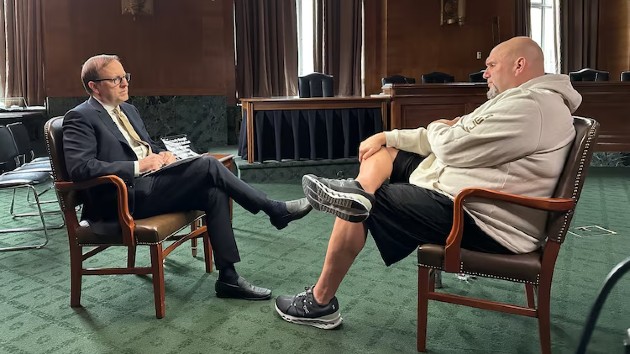Whooping cough cases on the rise, nearly three times as high as last year: CDC
Written by ABC AUDIO on June 1, 2024

(NEW YORK) — Cases of whooping cough are on the rise across the United States, data from the Centers for Disease Control and Prevention shows.
There have been at least 4,864 whooping cough cases reported this year. This is nearly three times higher than the 1,746 cases reported at the same time last year.
The number of cases for 2024 is similar to those seen in 2018-2019, before the COVID-19 pandemic.
The national trends mirror those seen in many U.S. states. The Oregon Health Authority said Thursday that 178 cases have been reported as of May 29, a 770% increase from the 20 cases reported by at the same time in 2023, according to local ABC News affiliate KATU-TV.
Additionally, local reports indicate that schools in Pittsburgh, Pennsylvania, and Minnetonka, Minnesota, are seeing outbreaks of whooping cough.
Dr. Felicia Scaggs Huang, an assistant professor of pediatrics in the division of infectious diseases and medical director of infection prevention and control at Cincinnati Children’s Hospital Medical Center, said whooping cough cases are on the rise globally but that the number of cases in 2024 is similar to those before the COVID-19 pandemic.
“Although these numbers are up significantly from last year, these numbers are more similar to what we saw before the COVID-19 pandemic and, historically, we do see increases in cases on a cycle of every three to five years,” she told ABC News.
Whooping cough, or pertussis, is a very contagious respiratory illness caused by a type of bacteria called Bordetella pertussis.
These bacteria attach to the cilia — the tiny, hair-like structures found on the surface of cells – of the upper respiratory system and release toxins. The toxins damage the cilia and cause the upper airways to swell, according to the CDC.
Whooping cough is spread from person-to-person through coughing and sneezing. Infected people can be contagious for weeks without knowing they have whooping cough.
Early symptoms often resemble a common cold — runny nose, cough and low-grade fever — and typically last for one to two weeks. Symptoms, however, can progress to rapid, violent cough coughing fits that can last up to 12 weeks.
Infants under age one, pregnant women and immunocompromised people are at highest risk but, according to Dr. Syra Madad, an infectious disease epidemiologist and chief biopreparedness officer for New York City Health and Hospitals, “the truth is everybody is at risk.”
Babies who contract whooping cough may have a cold-like illness, struggle to breathe or have apnea, which is life-threading pauses in breathing, the CDC said.
Scaggs Huang said some people can fracture their ribs because of coughing episodes or developing pneumonia.
“Elderly adults or infants less than 6 months may have more complications, like pneumonia and low oxygen levels that require hospitalization,” she said.
Whooping cough can be treated with antibiotics and receiving treatment early can reduce the severity of the infection. Most whooping cough symptoms can be managed at home, according to the CDC.
A vaccine for whooping cough was introduced in the late 1940s and the number of cases each year has since dropped dramatically, decreasing more than 90% compared to the pre-vaccine era.
Before the vaccine, there were an estimated 200,000 cases annually among children and up to 9,000 children died, according to the CDC.
There are two types of vaccines used today to protect against whooping cough: diphtheria, tetanus, and pertussis (DTaP) vaccine for babies and children younger than 7 and tetanus, diphtheria, and pertussis (Tdap) vaccines for children aged 7 and older, adults and pregnant women.
“People often think ‘Well once you get vaccinated you have lifelong immunity,’ and that’s actually not the case. You certainly need to get those booster doses,” Madad said.
Scaggs Huang said people should apply lessons learned from COVID-19 to other infectious diseases.
“I think a lot of the lessons we’ve learned from the COVID-19 pandemic apply to a lot of other respiratory infections,” Scaggs Huang said. “If you see someone who is sick, ask them to keep your distance, especially if you have a young infant or an elderly or immunocompromised person in your home. If you’re sick, stay at home, and, if you’re ever traveling or you’re in an area where there are a lot of pertussis cases, it’s OK to wear a mask in public on an airplane or at the hospital.”
Copyright © 2024, ABC Audio. All rights reserved.






